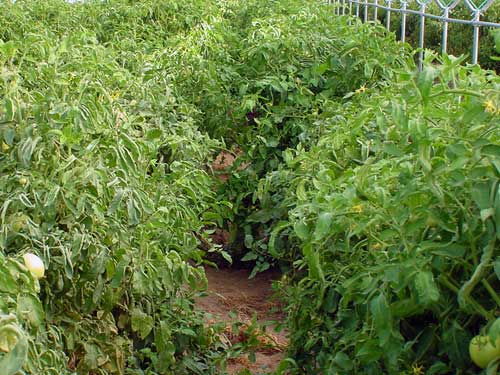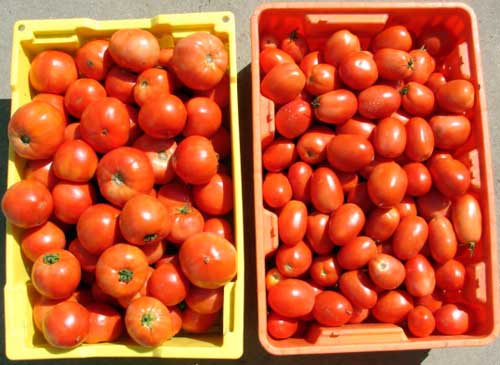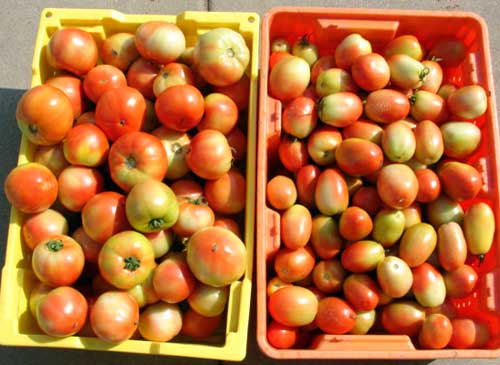Experience with growing tomatoes in high tunnels: Fertilization, quality and yield
Tomatoes are one of the more popular crops to produce in high tunnels, but may also be one of the more difficult. Applying field practices to tunnel production can lead to a disappointing outcome.
Tunnels have made a big impact on production, especially for small-scale producers. High tunnels extend the season, improve yield and quality and make organic production easier for some crops. This is the third report on observations from seven years of tunnel tomato trials at Michigan State University Extension’s Southwest Michigan Research and Extension Center in Benton Harbor, Mich. (Read the first report on insects, diseases and weeds; the second report on crop rotation; and the fourth report on irrigation, training and temperature management.)
High tunnel tomato producers often initially use a field production approach. It doesn’t take long for them to figure out this may not be the best way to produce tomatoes in a tunnel. The first thing they notice is the increase in growth and foliage. Tomatoes that only reach 4 feet in height in the open field will easily reach 6 feet or more in tunnels if the same fertilizer rates are used. This lush growth delays fruit development and makes harvesting difficult (Photo 1).

Photo 1. Tunnel-grown tomatoes showing excessive growth from field rates of nitrogen.
Photo credit: Ron Goldy, MSUE
This growth response is not clearly understood. It may be due to more efficient use of nutrients since there is little to no leaching. The plastic cover also reduces light by 25 percent or more, creating a shade environment inducing plants to stretch for light and have larger leaves and longer internodes. Growers will have better results if they lower fertilizer to 40 to 50 percent of field rates.
Tunnel-grown tomatoes generally produce larger and more fruit than the same variety produced outside the tunnel. They will also have a higher pack-out of number one fruit since they have fewer fruit defects. One fruit condition tunnel tomato growers may experience is an increase in gray wall (Photo 2). Gray wall is a poorly understood condition influenced by temperature, light, nutrition and genetics. When it occurs in the field, the fruit never fully ripens in the affected area and the fruit is discarded in the field. When I observe it on tunnel-grown fruit (Photo 2), the affected areas do ripen. So, growers should not discard fruit too quickly since it may ripen and be marketable.


Photo 2. Tunnel-grown tomatoes showing gray wall symptoms (bottom) that later ripened (top).
Photo credit: Ron Goldy, MSUE
Growers moving from field tomato production to tunnel production need to not automatically apply field techniques in the tunnel. Production requirements regarding fertilizer rates, pest control and other issues can potentially be much different. Starting on a small scale and gaining experience would be a wise approach.
For high tunnel research reports generated by MSU Extension at SWMREC, go to the SWMREC Annual Reports website and look at the Annual Reports starting in 2005.
Related MSU Extension articles
- Experience with growing tomatoes in high tunnels: Insects, diseases and weeds
- Experience with growing tomatoes in high tunnels: What about crop rotation?
- Experience with growing tomatoes in high tunnels: Irrigation, training and temperature management
- Experience with high tunnel production: Annual crops that have done well in southwest Michigan



 Print
Print Email
Email




